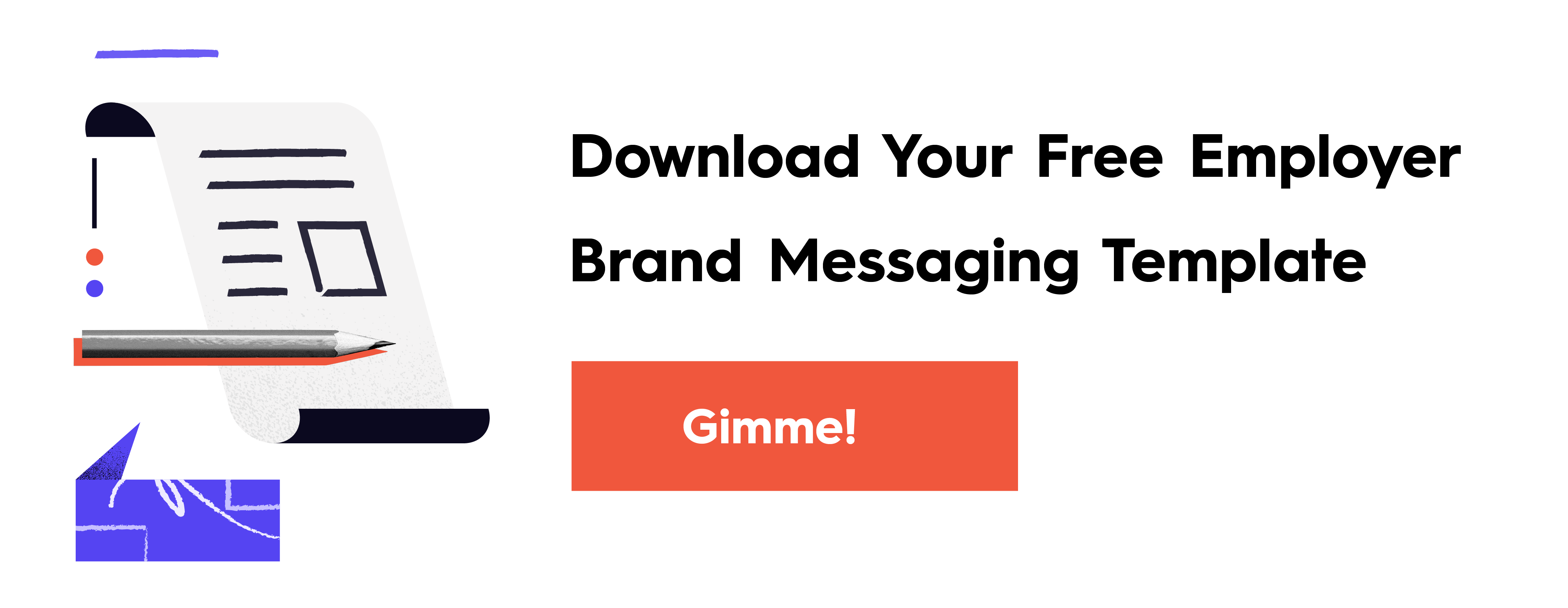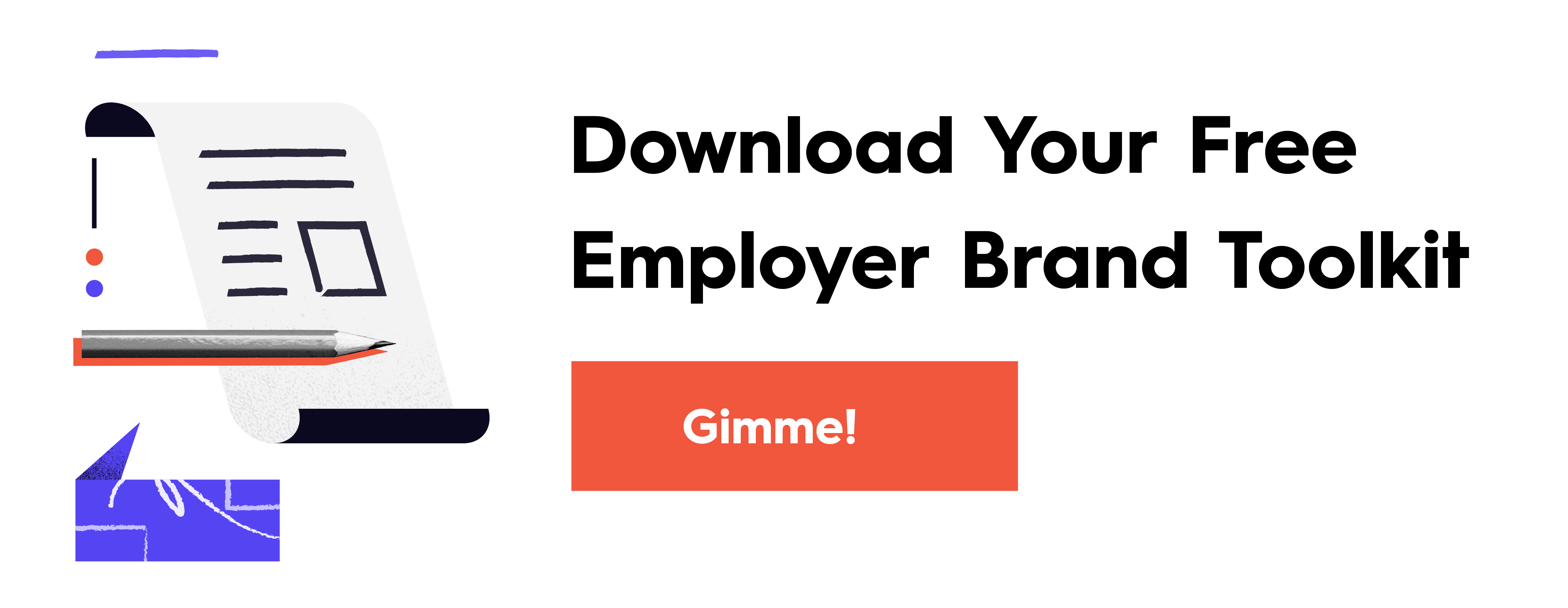There are many ways to share your employer brand, but storytelling is one of the most powerful. From your website, to your social, to job search platforms, you have plenty of opportunities to tell interesting, unique stories that showcase your brand, capture people’s attention, and entice them to join you. The secret to successful employer brand storytelling is, of course, consistency. But knowing exactly what stories to tell, and how you’re going to tell them, isn’t always easy. Hence, an employer brand content strategy is crucial.
When you can clearly define your brand story, brainstorm great content ideas to bring it to life, and publish consistently, you can make the right impression at every stage of the employee journey.
How to Create an Employer Brand Content Strategy
Here, we’ll walk you through the steps to build a cohesive content strategy to promote your employer brand, reach the best talent, and retain the talent you have. Whether you’re refreshing your current strategy or starting from scratch, this strategy will help you create stronger connections one story at a time.
Before You Start!
To build out your employer brand content strategy, start by downloading our free Employer Brand Messaging Template. This tool will help you:
- Outline your Employer Value Proposition and messaging pillars
- Create campaign ideas to support each pillar
- Identify your story beats
With this template, you can ensure that every piece of content you create tells a consistent, cohesive story about your employer brand.

Now you’re ready to work through the following steps.
Step 1: Do your research.
The biggest thing that will tank your content strategy is crafting it around an identity that you don’t actually have. Thus, it’s important to understand what your employer brand is, how it’s perceived, and how it stacks up to your competition. So, before you dive into content brainstorming, do your due diligence to understand your strengths and weaknesses.
- Audit your employer brand. Follow our guide to interview prospective, current, and former employees. This will help you understand how your employer brand is currently perceived, what makes your company a special place to work, and how you can improve.
- Do a competitive analysis. In addition to understanding how your own brand is perceived, you need to understand how your competition is perceived. Use our template to get insight into how you can better position yourself in the marketplace.
- Map your employee experience. To turn prospective candidates into engaged employees, you need to tell the right stories to move them along the path to employment. By mapping their journey you’ll understand which messages people are or aren’t getting from your employer brand, what they want to hear, and how you can fill in the gaps through storytelling.
With these helpful insights, you can craft a stronger strategy that helps you better connect with prospective and current employees.
Step 2: Identify your core strengths.
There are probably a lot of things that make your company a great place to work. Based on the research you’ve done and the feedback you’ve received, compile a list of your employer brand’s positive traits, benefits, or differentiators. This can include anything and everything (e.g., free lunches, career coaching, supportive culture).
With these traits listed out, it’s likely that you will notice similar themes arise. If so, you may be able to group your strengths into categories. For example, if people like your volunteer initiatives and your unlimited vacation hours, you might categorize those things under “generosity.”
[bctt tweet=”Your brand values can be a huge differentiator. Think about how you can highlight your commitment to D&I, your unique initiatives, or other ways you bring those values to life.”]
Step 3: Craft your Employer Value Proposition.
An employer value proposition is a single, succinct statement that outlines why people should want to work for you. It basically articulates your main selling points in a compelling way. Your EVP is a significant part of your content strategy because all stories you tell will ultimately reinforce it.
To identify your core selling points, comb your list of strengths and identify the top 3-5 points that stick out. Remember that you want to stand out from the competition, so choose the things that really are most unique or enticing about your brand. Once you’ve identified these, use our simple guide to write your EVP.
Step 4: Identify your messaging pillars.
Whether you’re crafting articles, Instagram posts, or CTAs on your Careers page, you need to tell a brand story that is honest, engaging, and consistent. Basically, you need a blueprint to keep you on message and on brand. Messaging pillars do that for you.
Each pillar represents a unique aspect of your employer brand (aka a selling point) to highlight in your storytelling. Together, these pillars comprise the core of your content strategy and make it easy to both brainstorm and vet content ideas.
Use the 3-5 points you identified for your EVP to inform your pillars. Some brands may identify 3 main points; some brands may use more. We recommend 3-5, as you don’t want to overwhelm your audience (or yourself), and you want to make sure they are compelling and distinct from each other. (Again, if you have multiple strengths, you may be able to condense into one pillar.)
Step 5: Ideate content campaigns.
Once you have these pillars defined, you can start to brainstorm your campaign ideas. To make sure your strategy is successful…
- Know your goal. Are you building general employer brand awareness, or are you promoting a specific position? Think of your audience, what drives them, and what will speak to their interests. For example, if you’re targeting engineers, you may want to focus on your innovation or growth opportunities.
- Brainstorm the concept. You should be able to clearly identify how your idea supports your story pillar. (If you can’t, it might not be the strongest campaign idea.)
- Identify the core story. What are the main points you want to get across?
- Identify your channels. Make the most of earned, owned, and paid distribution to reach people where they’re at.
- Choose the right content format. The package is just as important as the content, so consider which format will make the most impact. If you need inspiration, here are 25 types of content you can experiment with.
- Set your metrics. Use these metrics to determine how you’ll measure your success.
For more content ideas, follow these 10 tips to tell your story, and get inspired by how these 15 brands do it.
Step 6: Build Your Editorial Calendar
To bring your employer brand strategy to life, build out an editorial calendar that will help you create a consistent presence.
- Identify your publishing cadence. Even if you’re only publishing quarterly, a solid plan will help you stick to your deadline and maximize your resources.
- Optimize publishing. Know what times are best for publishing, know what keywords you want to target, and make sure anything you post has a CTA.
- Look for opportunities to join conversations. Seasonal holidays, major industry events, or news stories can all provide opportunities to showcase your employer brand. Whether you’re highlighting your Halloween costume contest or showing people how your team solved a problem ahead of a product launch, there are many savvy ways to bring your employer brand to life. That said, make sure your tie-in is appropriate. (Beware of newsjacking; it can backfire.)
Most importantly, remember that growing your employer brand takes patience. Continue to invest in your culture, spotlight your brand in creative ways, and track your results. The more data you have, the better you can refine your content strategy, and the more impactful you’ll be.
If you’re not sure where to start, see our guide to build an employer brand. And if you’re not prepared to do it alone, consider bringing in some support. Follow these tips to find the right content agency for you, or hit us up. We’re always down to talk shop.





